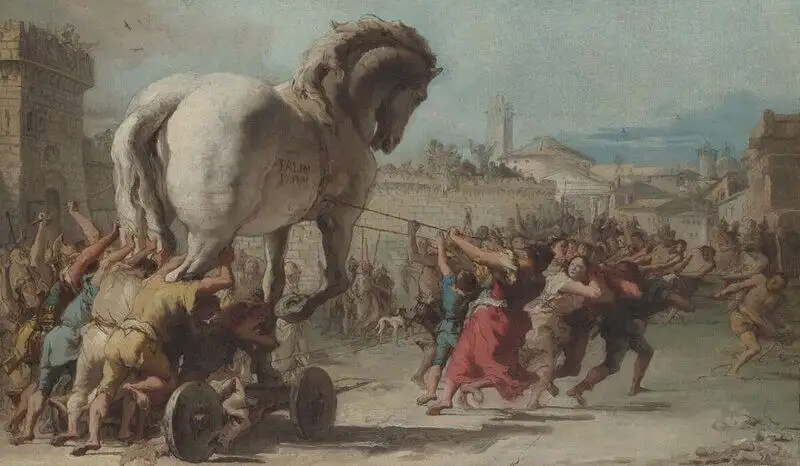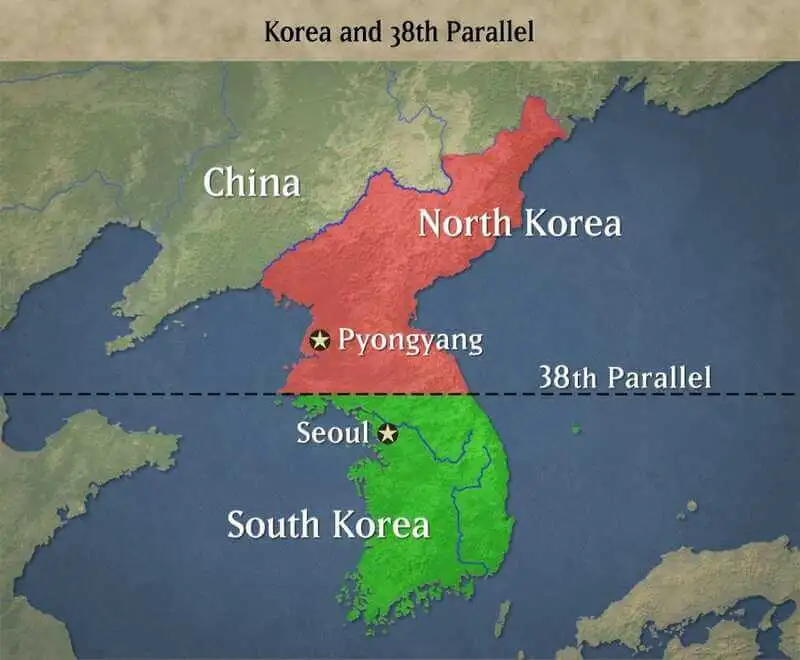The Battle of Trebia, fought in late December 218 BCE, stands as a pivotal moment in the Second Punic War, marking the first major victory of the Carthaginian general Hannibal Barca against the Roman Republic. This clash showcased Hannibal’s tactical genius and set the stage for his audacious campaign in Italy. In this comprehensive exploration, we delve into the time and date, location, causes, detailed course, casualties, and victor of the Battle of Trebia, offering insights into one of antiquity’s most significant military engagements.
Time and Date of the Battle of Trebia
The Battle of Trebia occurred on either December 22 or 23, 218 BCE, likely around the winter solstice. Ancient sources, such as Polybius and Livy, do not provide an exact date, but they agree it took place in late December during a harsh winter. The timing was critical, as the cold weather and icy conditions played a significant role in the battle’s outcome, influencing the physical state of the combatants and Hannibal’s strategic planning.
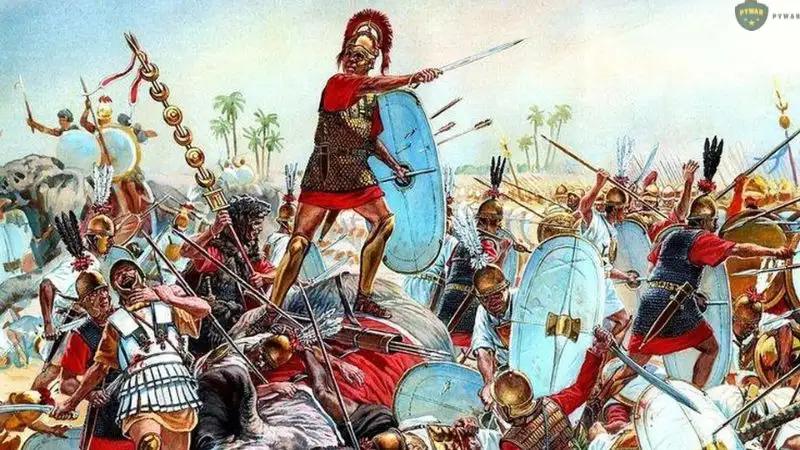
Location of the Battle
The battle unfolded on the flood plain of the west bank of the lower Trebia River, near the settlement of Placentia (modern-day Piacenza) in northern Italy’s Po Valley, within the region known as Cisalpine Gaul. The Trebia, a shallow, braided stream flowing into the Po River, provided a flat, open terrain ideal for Hannibal’s cavalry maneuvers. The nearby Roman camp at Rivergaro, situated on higher ground southwest of Placentia, served as the staging point for the Roman forces. This location, roughly 70 kilometers southeast of Milan, was strategically chosen by Hannibal to exploit the terrain and weather to his advantage.
Causes of the Battle of Trebia
The Battle of Trebia was a direct consequence of the escalating tensions between Rome and Carthage during the Second Punic War (218–201 BCE), a conflict rooted in their rivalry for dominance in the Mediterranean. The war’s immediate trigger was Carthage’s expansion in Iberia (modern Spain and Portugal), particularly Hannibal’s siege of Saguntum, a Roman-allied city, in 219 BCE. This act violated treaties between Rome and Carthage, prompting Rome to declare war in 218 BCE.
Hannibal, a brilliant Carthaginian general, responded audaciously by leading an army of approximately 102,000 men, including infantry, cavalry, and war elephants, from Iberia through Gaul and over the Alps into Italy. This grueling march, completed by late 218 BCE, reduced his force to around 26,000 due to losses from harsh conditions and hostile tribes. Upon arriving in Cisalpine Gaul, Hannibal’s presence threatened Roman control over the region, which was already unstable due to unrest among local Gallic tribes like the Insubres and Boii, who resented Roman colonization.
The Romans, determined to confront this invasion, dispatched two consular armies under Publius Cornelius Scipio and Tiberius Sempronius Longus. Scipio’s initial encounter with Hannibal at the Battle of Ticinus in November 218 BCE resulted in a Roman defeat, with Scipio wounded and forced to retreat to Placentia. Sempronius Longus, recalled from Sicily, joined Scipio’s forces near the Trebia River, eager to engage Hannibal and secure glory before his consular term ended. Hannibal, meanwhile, sought a decisive victory to solidify alliances with Gallic tribes and boost his army’s morale. These converging ambitions—Roman determination to repel the invader and Hannibal’s need to establish dominance—set the stage for the Battle of Trebia.
Course of the Battle
The Battle of Trebia was a masterclass in tactical deception and exploitation of Roman impulsiveness, orchestrated by Hannibal. Below is a detailed account of its progression, drawn from ancient sources like Polybius and Livy, as well as modern analyses.
Prelude to Battle
After the Roman defeat at Ticinus, Scipio retreated across the Trebia River, establishing a fortified camp on high ground near Rivergaro. Sempronius Longus arrived in early December, bringing his army of approximately 25,000 men to join Scipio’s, creating a combined force of about 40,000—16,000 Roman legionary infantry, 20,000 allied infantry, 4,000 cavalry, and 6,000 light infantry (velites). Hannibal’s army, bolstered by Gallic allies, also numbered around 40,000, with 20,000 infantry (Libyan, Iberian, and Gallic), 10,000 cavalry (including Numidian horsemen), and a few surviving war elephants.
Hannibal meticulously prepared for the battle. He secured supplies by bribing Roman allies at Clastidium (modern Casteggio) to surrender a grain depot, resolving logistical challenges. He also scouted the terrain, identifying a gully southwest of the river where he hid 2,000 men (1,000 infantry and 1,000 cavalry) under his brother Mago for an ambush. Hannibal’s strategy relied on luring the Romans across the icy Trebia River, where they would be fatigued and vulnerable, while his own troops remained rested and well-fed.
Sempronius, driven by ambition and overconfidence from a minor skirmish victory, ignored Scipio’s advice to delay battle until spring. Scipio argued that winter training would strengthen the Roman recruits while Hannibal’s Gallic allies might desert due to inactivity. However, Sempronius, aware his consulship would end soon, sought a quick victory.
The Battle Unfolds
On the morning of December 22 or 23, Hannibal initiated his plan. At dawn, in cold, snowy conditions, he sent his Numidian cavalry—lightly armed and highly mobile—across the Trebia to harass the Roman camp. Sempronius reacted impulsively, ordering his 4,000 cavalry and 6,000 velites to pursue, followed by his entire army. The Romans, without breakfast and unprepared for the cold, waded through the shoulder-deep, icy river, emerging wet, hungry, and exhausted on the western bank. Hannibal’s troops, having eaten and warmed themselves by campfires, were ready for combat.
As the Romans formed their battle lines in the traditional manipular formation—velites in front, heavy infantry (hastati and principes) in the center, and cavalry on the flanks—Hannibal deployed his forces strategically. His infantry, including Libyan spearmen and Gallic warriors, formed the center, with cavalry and war elephants on the flanks. The Numidian cavalry, after luring the Romans across the river, feigned a retreat, drawing the Roman forces into the open floodplain.
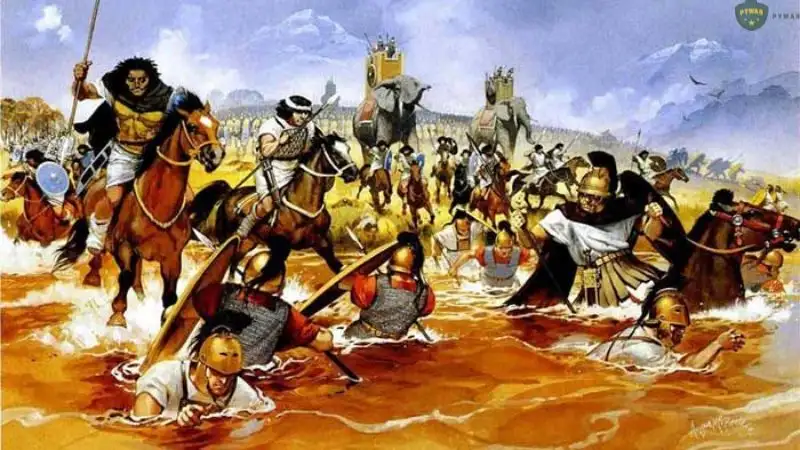
The Engagement
The battle began with Hannibal’s Numidian cavalry and Balearic slingers engaging the Roman velites, disrupting their formation with javelins and stones. The Roman skirmishers, already weakened from the river crossing, struggled to hold their ground. Sempronius, believing he could overpower Hannibal’s line, ordered his heavy infantry to advance. However, the Roman troops were fatigued and disorganized, moving in columns that took hours to deploy into a cohesive battle line.
As the Roman heavy infantry engaged Hannibal’s main line, the Carthaginian cavalry and elephants outmaneuvered the Roman flanks. The Numidians, leveraging their superior mobility, outflanked the Roman cavalry, which had exhausted itself in the chase. Meanwhile, Mago’s hidden force of 2,000 emerged from the gully, launching a devastating ambush on the Roman rear. This surprise attack caused chaos, particularly among the velites and principes, who were caught between Mago’s force and Hannibal’s main line.
The Roman center, primarily the heavy infantry, fought bravely and maintained some cohesion, but the flanks collapsed under the pressure of Hannibal’s cavalry and Mago’s ambush. Many Romans attempted to flee back across the river but were cut down by pursuing Carthaginians or trampled by elephants. The Roman cavalry, overstretched and ineffective, could not counter the Numidian horsemen’s agility.
The Roman Breakout
Despite the dire situation, approximately 10,000 Roman infantry in the center, primarily veteran legionaries, held their ground and eventually broke through Hannibal’s line, retreating in good order to Placentia. This group, roughly 2.5 legions, avoided total annihilation, but the rest of the army was not so fortunate. The battle ended with the Romans scattered, many drowning in the river or slaughtered as they fled.
Casualties of the Battle
Casualty figures for the Battle of Trebia vary across sources, reflecting the challenges of ancient historiography. According to Polybius and Livy, the Romans suffered catastrophic losses, with estimates ranging from 15,000 to 32,000 killed, wounded, or captured. A commonly cited figure is around 20,000 Roman casualties, including many of their best legionaries and allied troops, with an additional 12,000–15,000 possibly taken prisoner. The Carthaginians, by contrast, sustained relatively light losses, estimated at 4,000–5,000, primarily among their Gallic infantry. The disparity reflects Hannibal’s effective use of terrain, weather, and tactics to minimize his own losses while maximizing Roman casualties.
Who Emerged Victorious?
Hannibal’s Carthaginian army emerged decisively victorious at the Battle of Trebia. The battle was a crushing defeat for Rome, marking Hannibal’s first major triumph in Italy. The victory bolstered Carthaginian morale, solidified Hannibal’s alliances with Gallic tribes, and demonstrated his ability to challenge Rome on its own soil. For the Romans, the defeat was a psychological and military blow, exposing vulnerabilities in their command structure and prompting a shift toward more cautious strategies under leaders like Quintus Fabius Maximus. Hannibal’s success at Trebia paved the way for further victories at Lake Trasimene and Cannae, cementing his reputation as one of history’s greatest tacticians.
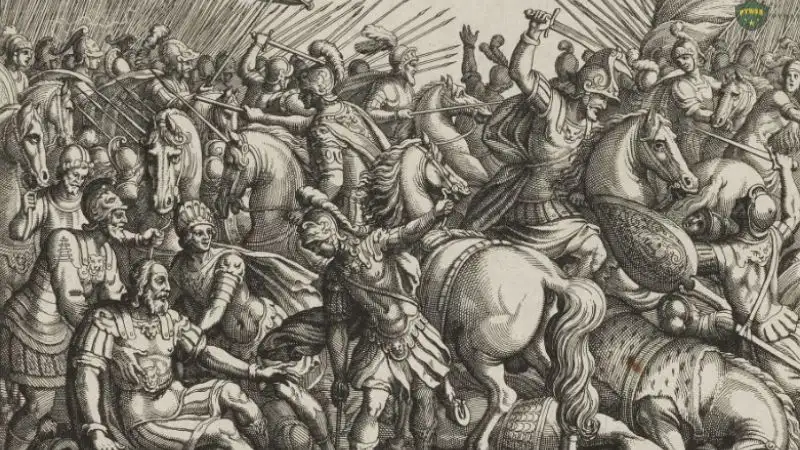
Significance and Legacy
The Battle of Trebia was a turning point in the Second Punic War, showcasing Hannibal’s strategic brilliance and the effectiveness of his diverse army. His use of terrain, weather, and psychological manipulation—exploiting Sempronius’ rashness—set a precedent for his later victories. The battle also highlighted the importance of logistics, as Hannibal’s ability to secure supplies and allies allowed him to sustain his campaign in hostile territory. For Rome, the defeat underscored the need for disciplined leadership and adaptability, lessons that would shape their eventual response to Hannibal’s invasion.
The Trebia battlefield, near modern Piacenza, remains a site of historical interest, though its exact boundaries are debated due to changes in the river’s course. Visitors to the region can explore this storied ground, reflecting on a battle that altered the course of the Second Punic War and left an enduring mark on military history.
Sources
- Polybius, Histories, Book 3
- Livy, The History of Rome
- Goldsworthy, Adrian. The Fall of Carthage: The Punic Wars 265–146 BC. 2006.


